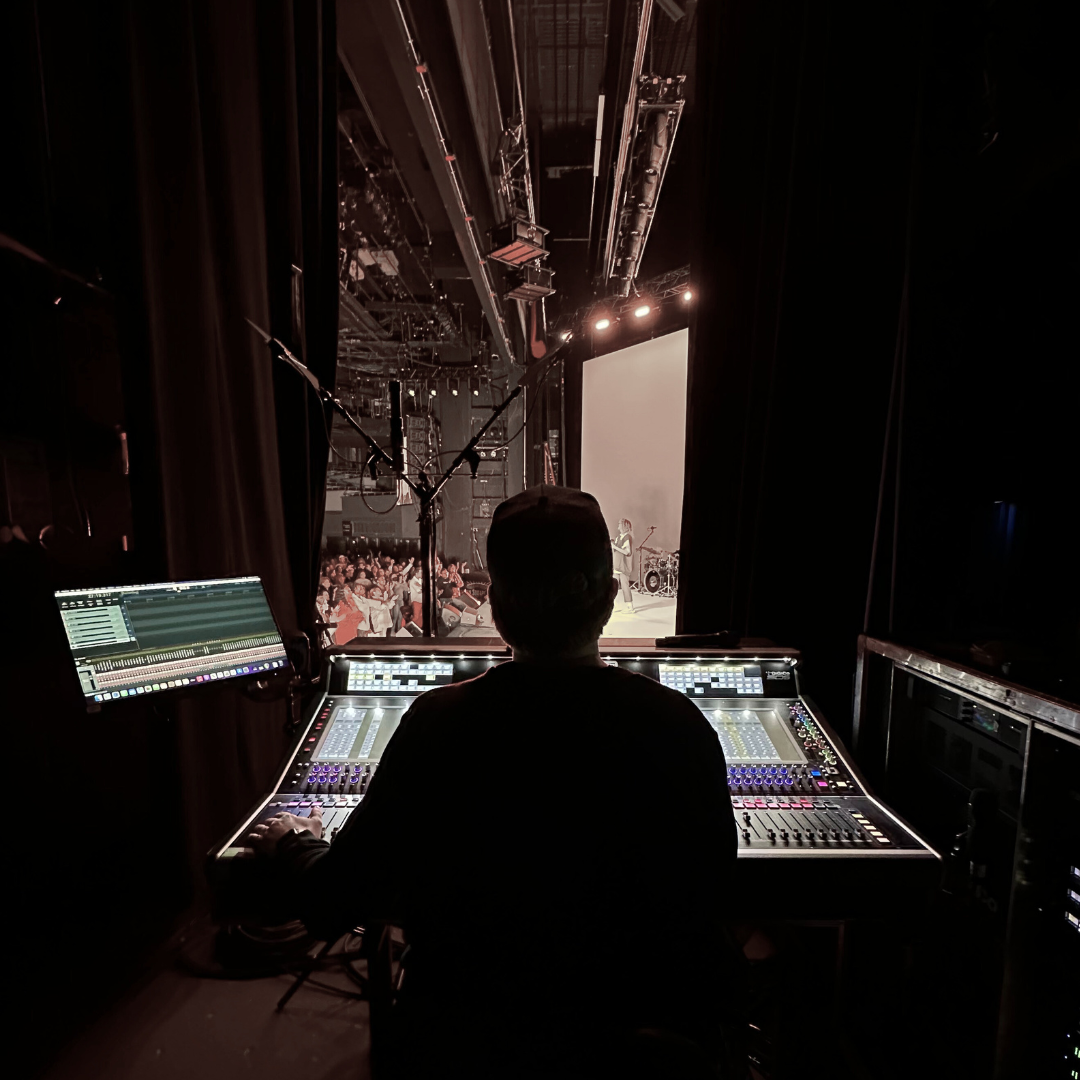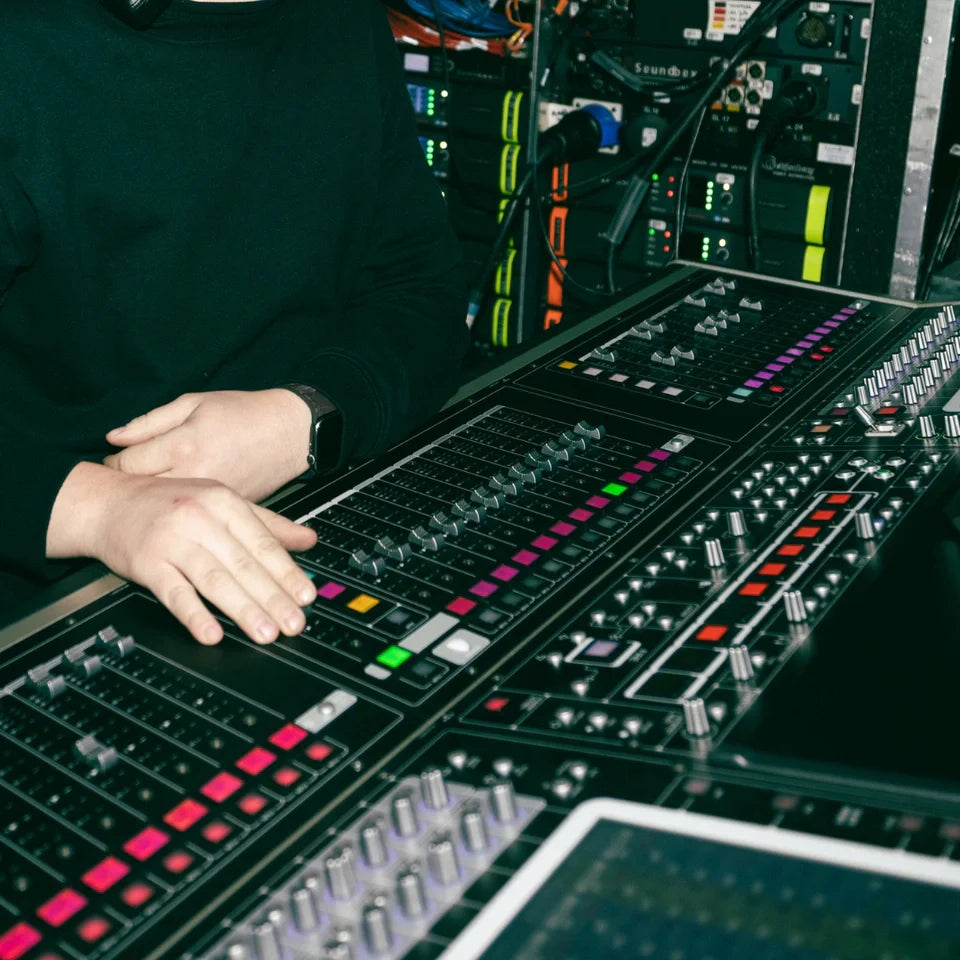Good communication between musicians and sound techs can make or break a performance. Whether you’re playing in a small venue or on a massive stage, understanding live sound terminology and concepts is crucial to achieving the best possible sound. A strong partnership with the sound tech ensures that your live sound setup is tailored to your needs and avoids potential issues during the show. Here’s a deeper dive into some key terms every musician should know:
Gain Structure
Gain structure refers to how input levels are set on the sound console, which plays a crucial role in achieving a clean, distortion-free sound. If the gain is set too high, it can cause distortion, while setting it too low may result in a weak or muffled signal. Understanding how to adjust and communicate gain levels helps ensure that each instrument and vocal sounds clear and balanced. Musicians should be aware of the importance of both individual and overall levels, and remember that proper gain structure is foundational for achieving the right sound mix.
Frequency Spectrum
Understanding the frequency spectrum is invaluable when it comes to live sound. Knowing what range constitutes low end, low-mids, mids, high-mids, and highs can help you communicate EQ changes effectively. Train your ear to pick out general ranges that are causing trouble, clutter, or saturation in your mix. For example, if your sound feels “boomy” or “muddy,” you might ask for a reduction in the low-mids (around 200-500 Hz). By identifying problem areas and addressing them directly, you’ll achieve a clearer, more polished sound.
High-Pass Filter (HPF)
A High-Pass Filter (HPF) is used to remove unwanted low-frequency rumble from instruments or vocals. This filter eliminates lower frequencies that may muddle the mix or interfere with other sounds. For example, when a vocalist is on stage, they might request that an HPF be applied to their mic to clear up any unnecessary boominess or mic handling noise. Musicians should feel comfortable asking for HPF adjustments, especially if they notice that their mix is getting cluttered with low-end noise. This can help ensure a cleaner, more defined sound that allows each element to shine.
Compression
Compression is often misunderstood or misused but can be a game-changer when applied correctly. Compression evens out the dynamic range of a sound source, ensuring that the quieter parts are audible while preventing the louder parts from overpowering the mix. However, over-compressing can strip the life out of your sound or create a “squashed” effect. When used musically and tastefully, compression can add cohesion to your mix, but it’s important to understand its impact on sound translation and presentation. A well-applied compressor can be your best friend, but an overzealous one can be your worst nightmare.
In-Ear Mix
An in-ear mix refers to your personal monitoring setup, where you receive a custom blend of the sounds you need to hear on stage, typically through in-ear monitors (IEMs). This system is critical for musicians who want to hear themselves clearly while performing. It's important to communicate exactly what you need in your in-ear mix—whether you need more of your vocals, less bass, or a better balance of instruments. The more specific and clear you can be about what you’re hearing or not hearing, the easier it will be for the sound tech to adjust your mix. For example, if you’re hearing too much low end and it’s muddying your performance, asking for “less bass in my mix” can save valuable time and help you deliver a better performance.
Clear Communication
Musicians who know how to describe their needs make life easier for everyone. The more you understand the terminology and can articulate your needs, the more efficiently you and the sound tech can collaborate to create the best sound possible. Whether it’s asking for more vocals, adjusting the monitor mix, or tweaking the gain structure, clarity in your requests leads to quicker solutions. For example, instead of saying “It doesn’t sound right,” try being specific: “Can you give me more of the guitar in my mix?” or “I need more high frequencies on my vocals.” This specificity helps ensure that your needs are met accurately, saving time during soundcheck and avoiding unnecessary frustration during the performance.
Conclusion
Mastering the basics of live sound lingo will not only improve your performance but also strengthen the relationship between you and the sound tech. The better you communicate, the smoother the entire live performance process will be. By knowing key terms like gain structure, high-pass filters, in-ear mixes, and more you’ll be better equipped to articulate your sound preferences and address any issues that may arise. In the world of live music, collaboration is key—and that includes speaking the language of sound techs.
Take the time to learn these terms and make them part of your live performance toolkit. With clearer communication, you’ll find that your live sound experience becomes much more enjoyable and polished.



